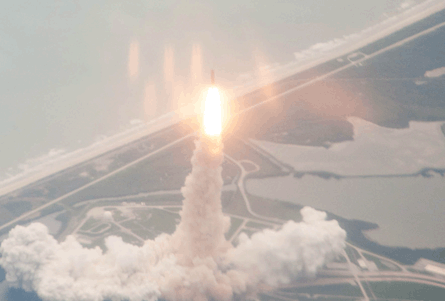As NASA prepares to bring the Space Shuttle home for the last time this week, the flagship International Space Station programme loses its principle supply-and-service vehicle and the US space programme returns to its uncomfortable late-1970s status of being unable to launch an astronaut to orbit, its situation between the final Apollo mission in 1975 and the first Shuttle flight in 1981.
American astronauts will continue to visit the ISS via a string of Russian Soyuz rocket launches scheduled to run from September 2011, but it will be at least 2016 before a US-built and launched spacecraft enters service, and there is no foreseeable prospect of a runway-landing spaceplane to replace the flexible crew and cargo capability being retired with Shuttle.
 |
|---|
© Rex Features |
Lockheed Martin is the prime contractor to NASA to develop the Orion crew vehicle, a parachute-landing capsule designed to take up to six astronauts to the ISS. Orion, originally commissioned for the now-cancelled Constellation return-to-the-Moon programme, is scheduled to test fly in 2013 and enter service in 2016.
Also in development, with a NASA budget, is Boeing's seven-astronaut Crew Space Transportation (CST)-100 spacecraft, another parachute-landing capsule expected to fly in 2015.
Separately, NASA is supporting private sector development of ISS resupply capability.
SpaceX test-flew its Dragon capsule in August 2010, including a successful, parachute-assisted splashdown from orbit, and is contracted to fly 12 ISS missions from later this year through 2015. Dragon is designed for possible conversion to a four-astronaut crew vehicle.
And Orbital Sciences has been contracted to provide eight ISS resupply flights between 2012 and 2015.
Meanwhile, the Shuttle Atlantis's farewell visit to the ISS has succeeded in its key mission objectives - delivery and docking of the European Space Agency-built multipurpose logistics module, Raffaello.
Source: Flight International


























